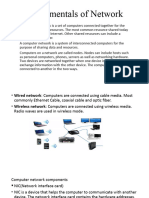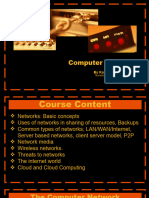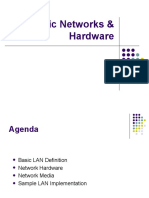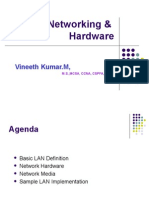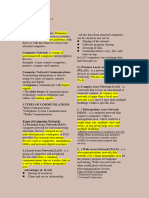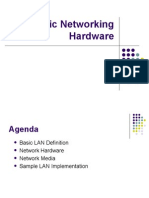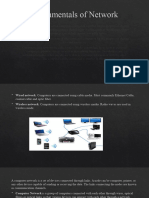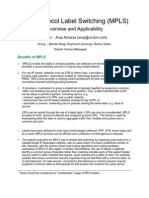0% found this document useful (0 votes)
8 views4 pagesDetailed Study On Networking Components
The document provides a detailed overview of networking components, including cables (twisted pair, coaxial, fiber optic), switches, hubs, routers, gateways, clients, servers, hosts, and network interface cards (NICs). It describes the types, features, and functions of each component, highlighting their roles in data transmission and network communication. Key concepts such as client-server architecture and various protocols are also discussed.
Uploaded by
ui23cs40Copyright
© © All Rights Reserved
We take content rights seriously. If you suspect this is your content, claim it here.
Available Formats
Download as DOCX, PDF, TXT or read online on Scribd
0% found this document useful (0 votes)
8 views4 pagesDetailed Study On Networking Components
The document provides a detailed overview of networking components, including cables (twisted pair, coaxial, fiber optic), switches, hubs, routers, gateways, clients, servers, hosts, and network interface cards (NICs). It describes the types, features, and functions of each component, highlighting their roles in data transmission and network communication. Key concepts such as client-server architecture and various protocols are also discussed.
Uploaded by
ui23cs40Copyright
© © All Rights Reserved
We take content rights seriously. If you suspect this is your content, claim it here.
Available Formats
Download as DOCX, PDF, TXT or read online on Scribd
/ 4




















